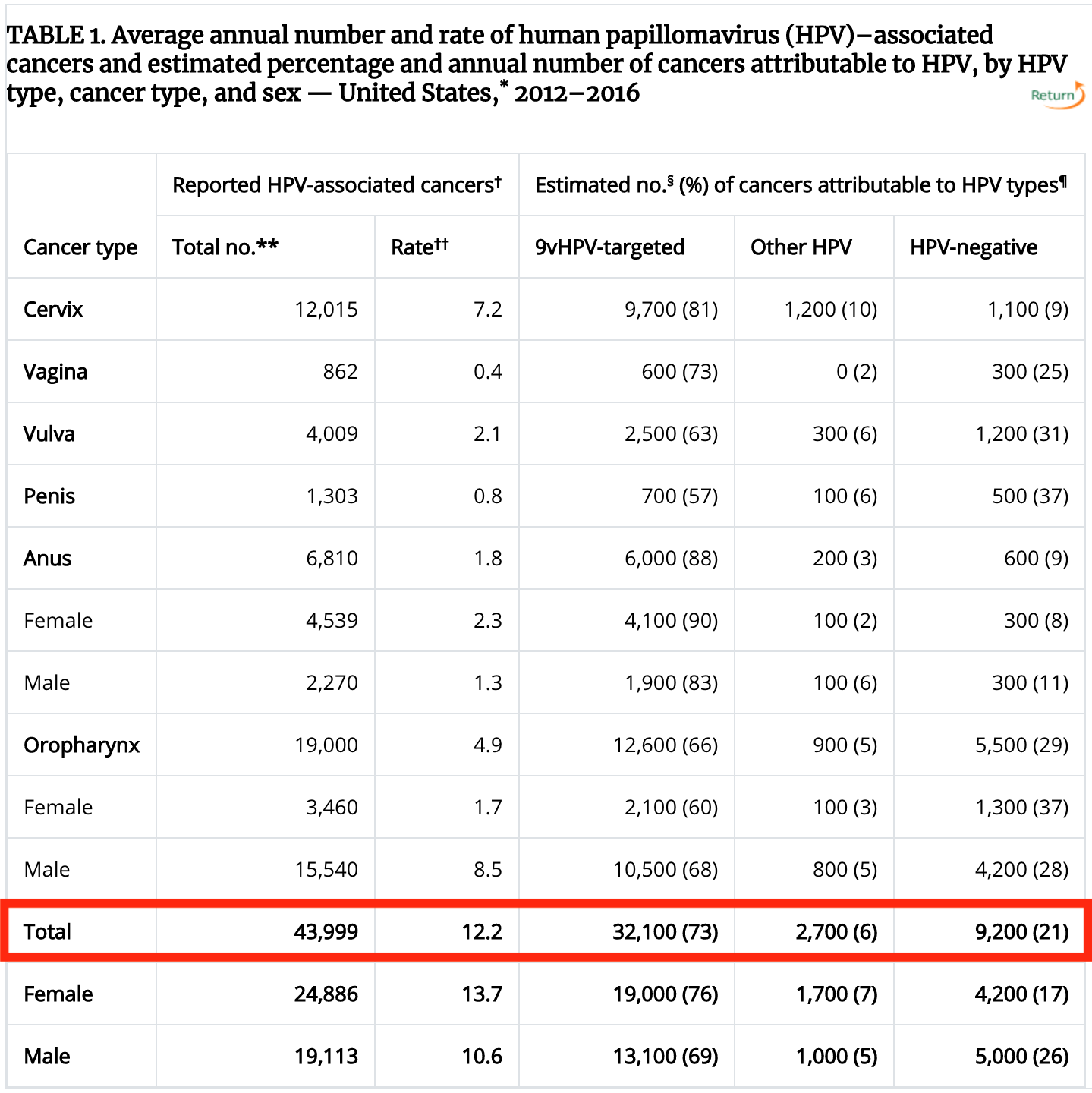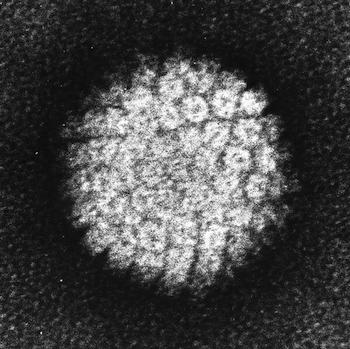Imagine if scientists invented a cure for cancer. Would you be interested in learning about it?
Conspiracy theorists insist that Big Pharma and the FDA are working together to hide a cure for cancer in order to make money. As I wrote previously, this is complete nonsense because a conspiracy of that size (which would require thousands if not millions of willing conspirators) would be impossible to pull off. Besides, whoever does invent a cure for cancer would likely win a Nobel Prize and become filthy rich.
Well, I have good news! Scientists have invented something even better than a cure for cancer: Prevention. All you need is a shot (okay, it's two shots), and your risk of certain types of cancers would fall dramatically. Yet, many people don't want it for themselves or their children, proving (at least in my mind) that conspiracy theorists don't even believe their own conspiracies.
Vaccine Could Prevent Nearly 75% of HPV-Associated Cancers
The human papillomavirus (HPV) comes in about 150 different varieties known as "strains." Some strains cause warts to grow on your feet, and this kind of HPV can be acquired by walking barefoot in moist areas, like public swimming pools or hotel showers. Other HPV strains are spread sexually, and these can cause genital warts or cancer.
The sexually transmitted HPV strains are very common. Indeed, they have been likened to the "common cold," and it is thought that 80% of sexually active people are infected with at least one HPV strain at some point in their lives. For most people, the virus is cleared, and they never even knew they were infected. But in some, the virus persists and causes cancer.
Several years ago, the FDA approved a nine-valent HPV vaccine, which means it targets nine different HPV strains (seven of which cause cancer and two of which cause genital warts). The vaccine is nearly 100% effective for preventing cervical infection (and hence, cervical cancer) by the HPV strains it targets.
Recently, the CDC published data on the annual number of new HPV-associated cancers in the United States. By "HPV-associated cancer," the CDC means cancers found in parts of the body -- like the cervix and throat -- that are often caused by HPV. Not all of them are. Yet, if everybody got vaccinated, we theoretically could cut such cancers by nearly 75%. (See chart.)

As shown, there are almost 44,000 new HPV-associated cancers in the United States each year. Of these, 9,200 (21%) are not actually caused by HPV, and another 2,700 (6%) are caused by HPV strains that aren't targeted by the nine-valent vaccine. But that leaves 32,100 (73%) of cancers that are targeted by the vaccine and are, therefore, potentially preventable.
So, Everyone Is Getting the Vaccine, Right?
And yet, not everybody is getting vaccinated. According to the CDC, about half of adolescents have not completed the HPV vaccine series. (Adolescents are vaccinated because it is best to administer the shots before they become sexually active.) An ounce of prevention is worth a pound of cure, but many people don't want it. One would think that a vaccine is preferable to chemotherapy.
Source: Senkomago V, Henley SJ, Thomas CC, Mix JM, Markowitz LE, Saraiya M. "Human Papillomavirus–Attributable Cancers — United States, 2012–2016." MMWR 68: 724-728. DOI: 10.15585/mmwr.mm6833a3




